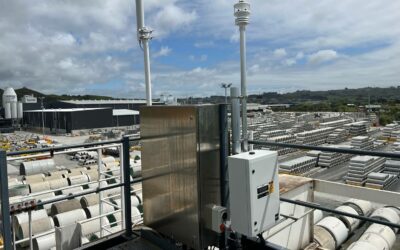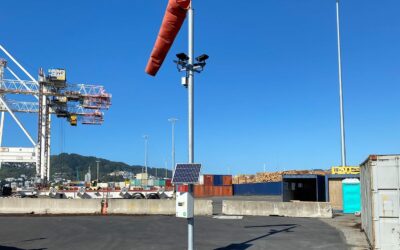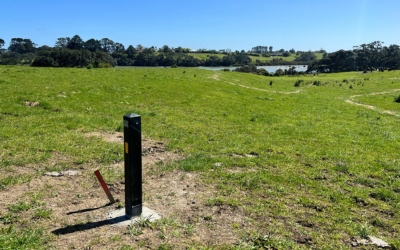Nitrate Groundwater Monitoring
How do you monitor nitrates in groundwater to help protect our environment?How do nitrates effect our groundwater and freshwater waterways?
Once in our groundwater, nitrates are very difficult to remove. Too much nitrogen in water, when combined with phosphorus, can contribute to nuisance growth of waterweed and algae. This can make water unsuitable for drinking and eventually leads to polluted lakes and rivers, waterways and groundwater.


How do nitrates effect our groundwater and freshwater waterways?
There is major concern about the health of our freshwater rivers and aquifers and the role of intensive agriculture in climate change. Nitrogen can enter waterways as bought-in feed or as nitrogenous fertiliser. Plants take up the nitrogen, but there is more nitrogen in the grass than animals can use, so the excess is returned to the soil as urine, primarily in the ammonium form. Bacteria in the soil convert the ammonium nitrogen to nitrate-nitrogen which is highly soluble, these nitrates can easily leach through the soil into the groundwater.
Once in our groundwater, nitrates are very difficult to remove. Too much nitrogen in water, when combined with phosphorus, can contribute to nuisance growth of waterweed and algae. This can make water unsuitable for drinking and eventually leads to polluted lakes and rivers, waterways and groundwater.

Accurate and reliable nitrate sensors create live data
New IoT technology, combined with low-energy connectivity and improved sensors have made live reporting of nitrates possible for waterways. It is an easy process to install new nitrate sensors in any body of water on an agricultural property, this includes ponds, lakes, streams and rivers.
The sensors immediately start reporting live data to the Adroit Platform to give you continuous monitoring of nitrates in the waterways. You can monitor the effects of heavy rain, fertiliser phasing and stock levels. The challenge is using data to adapt and improve farming and business processes to reduce environmental impact, without reducing productivity. Rich data will play a key role in future decision making to improve waterway quality.
Nitrogen cycle
In order to grow, plants absorb naturally occurring nitrogen and nitrogen from fertilisation. Excessive application of mineral fertilisers and animal manure for farming disturbs this cycle. This results in water pollution and eutrophication (excess growth of weeds and algae that suffocates life in rivers and seas).

Adroit nitrate solutions are used for:
Wells
Bores

Ponds

Catchments
Our most popular water monitoring kits
ADROIT UV NITRATE WATER MONITORING KIT

For more information about Adroit nitrate monitoring solutions contact us now.
Latest blog posts
Rapid Growth in Worksite Environmental Monitoring: Adroit’s Year in Review
When Adroit embarked on our 2023 journey, we were immediately struck by the growing interest in real-time Environmental Monitoring for the worksite.
Adroit environmental monitoring is helping CentrePort plan for the future
Nimish Patel has been with CentrePort’s Infrastructure team as a Project Engineer for two and a half years now. He says that CentrePort is planning a large investment in its stormwater network in the coming years, a project closely aligned to CentrePort’s commitment for protecting and preserving the environment.
The Benefits of Real-time Groundwater Monitoring
Groundwater monitoring is essential for preserving New Zealand’s valuable aquifers from damage or degradation. And with increased scrutiny and Council regulators, all kinds of businesses are moving to improve their groundwater measurement and reporting capability, including major construction and infrastructure companies throughout the country.


